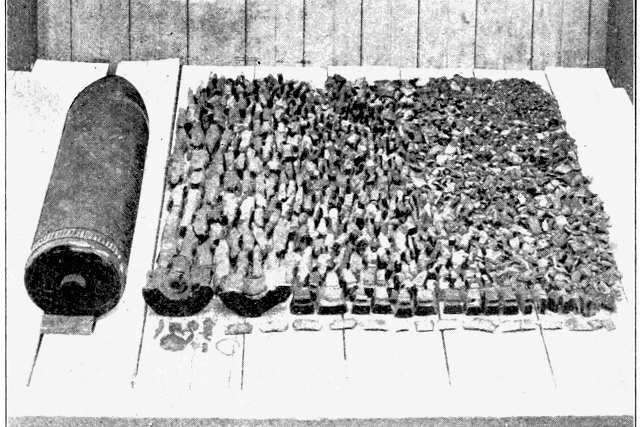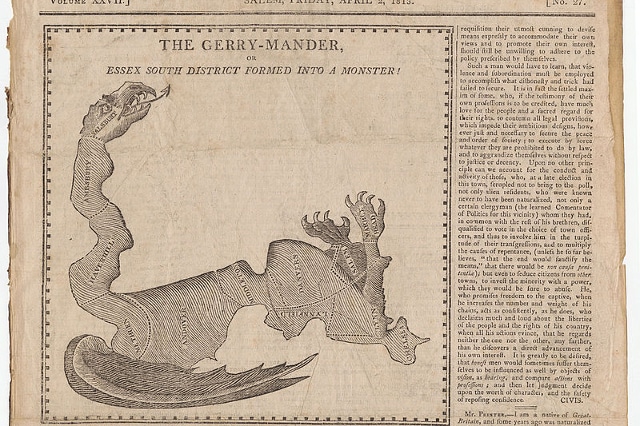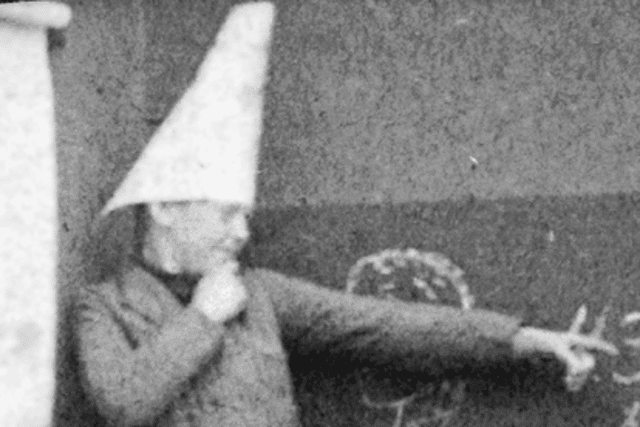An eponym is a word for an object or an activity named after a person, usually the person who first created the object or activity in question. The English language is filled with eponyms, many of them evident: Fahrenheit, Marxism, even America. But there are plenty of others that aren’t quite so obvious, even though we use them on a common basis. Here are 10 of them…
10. Nachos

One day in 1943, a maître d’ named Ignacio Anaya Garcia welcomed a group of soldiers’ wives into the restaurant where he worked – the Club Victoria near the Texas-Mexico border. The women had just been visiting their husbands on a nearby US Army base and stopped at the restaurant for a quick snack. There was just one problem, though – the chef was missing.
Anaya had to improvise. He went into the kitchen and whipped up something on the spot. He took some tortilla chips, melted some Wisconsin cheese over them, and added a few sliced jalapeños.
The ladies absolutely loved it. When he was asked what the dish was called, Anaya replied that it was the Nachos Especiales. He had named it after himself, since “Nacho” was the nickname that he went by. Little did he know that he had just created one of the most popular snacks in the world.
9. Shrapnel

Back in the late 18th century, an enterprising British army officer named Henry Shrapnel used his own money and time to research and design a new kind of artillery round. Intended for anti-personnel use, the shell was a hollow cannonball filled with lead shot designed to burst in mid-air using a delayed-action fuse.
Shrapnel got a chance to test out his invention in live combat conditions during the 1780s, but the British army wasn’t too quick to add it to its arsenal. It wasn’t until 1803 that it adopted a redesigned version of Shrapnel’s projectile, using a more modern, elongated shell instead of the original spherical one. However, it was during the Napoleonic Wars that this new artillery round, which was dubbed the shrapnel shell, really proved its worth.
The projectile was adopted by armies all over the world, and became the go-to artillery round for about 100 years, until it was made obsolete by the high-explosive shell. But although the shell itself fell out of favor, the name stuck around, and even today, the word “shrapnel” has come to mean any kind of bomb or shell fragment propelled by an explosion.
8. Silhouette

We’re staying in the 18th century, but crossing the Channel into France, where a man named Étienne de Silhouette was serving as the country’s Controller-General of Finances aka the finance minister. He had the unenviable task of trying to fill the country’s coffers at a time when France had a great deficit due to the Seven Years’ War. Therefore, De Silhouette enacted many penny-pinching measures which weren’t exactly popular with the populace and gave the minister a reputation as a miser.
At first, the phrase à la Silhouette meant “on the cheap,” but it quickly evolved to refer specifically to the shadow portraits that were quite in vogue in France at the time. After all, most people didn’t have the money to spend on a proper painted or drawn portrait of themselves, but a simple profile cut out of black paper and pasted onto a white background was a lot faster and cheaper.
How exactly De Silhouette’s name became attached to these shadow portraits is uncertain, but the most popular story claims that the minister himself was a fan and created them as a hobby. Since they were considered cheap alternatives, it made sense to name them after the most notorious cheapskate in the country.
7. Oscar

“And the Oscar goes to…” is a phrase we have heard countless times. In fact, we hear it every year when the Academy of Motion Picture Arts and Sciences doles out the most famous and recognizable award statue in the world. But that begs the question – why exactly is it called an Oscar?
This doesn’t have a definitive answer, but the version that the Academy itself endorses gives credit to its former executive director, Margaret Herrick. In the early 1930s, when Herrick was serving as the Academy’s first-ever librarian, she saw the statuette and joked that it resembled her uncle Oscar. Other employees started referring to the statuette as Oscar since its technical name, the “Academy Award of Merit,” was a bit long-winded, and this quickly became its unofficial moniker.
The first documented use of the word, however, comes from 1934, from an article in the New York Daily News by Sidney Skolsky. He called the award an “Oscar,” but made no mention of Herrick or her uncle, instead claiming that the name came from an old vaudeville joke.
6. Miranda Rights

Here’s a term that we hear in every cop show; whenever a criminal is arrested, he has to be “mirandized,” or to have his Miranda rights read to him. You know the ones – you have the right to remain silent, you have the right to an attorney yada, yada, yada… It’s not a huge leap to assume that they were named after somebody named Miranda, but who exactly?
His name was Ernesto Miranda and he was a 23-year-old immigrant from Mexico in 1963, when he was arrested on charges of kidnapping and rape. His victim ID’d him during a lineup and Miranda admitted to his criminal deeds during interrogation, even signing a written confession. He was then sentenced to 20-to-30 years in prison.
During his appeal, however, his defense lawyers argued that the confession should have been inadmissible in court since Miranda was unaware of his rights against self-incrimination. The Arizona Court sided with the initial ruling, but the lawyers took it all the way to the Supreme Court. In 1966, in a vote of 5-4, the US Supreme Court sided with Miranda, concluding that, during a police interrogation, a suspect must be made aware of his rights and must waive them explicitly. Miranda was given a new trial where he was found guilty again, but the Miranda rights have become a crucial part of the American justice system.
5. Leotard

The leotard has become the unofficial uniform for dancers, acrobats, and gymnasts all across the globe, but it wasn’t always named that. Originally, it was called a maillot, but its name changed over the decades thanks to the man who popularized it, the French acrobat Jules Léotard.
Born in 1838, Léotard initially studied to become a lawyer, but discovered that he was really good at swinging around the bars, ropes, and rings in his father’s gym. Therefore, he abandoned law school and joined the Cirque Napoleon, where he created the first ever flying trapeze routine.
As part of his training regimen, Léotard was also interested in developing a garment that was best suited for his needs – something that was streamlined and didn’t hamper his mobility at all. Bonus points if it also showed off his physique. That’s how the leotard was born, although he didn’t call it that. It wasn’t until some time after Léotard’s tragic and sudden death in 1870 that the garment came to share his name, both due to their strong association and to honor one of the fathers of modern acrobatics.
4. Gerrymandering

“Gerrymandering” might not be a common, everyday word, but it is certainly a word that has been used a lot in recent times. It refers to the political practice of manipulating district boundaries in order to give an unfair advantage to a certain group, usually a political party.
It is named after Founding Father and former Vice President of the United States Elbridge Gerry, who used this shady tactic in 1812 to great success. He wanted to give the Democrat-Republicans the edge over the opposing Federalist Party in the Massachusetts state elections, so he redrew the district lines and managed to get three Democrat-Republicans elected in a county where the Federalists previously held all five seats.
It was an effective strategy, although how involved Gerry actually was in the whole matter is still debated among historians. One thing was for sure – the practice had its fair share of critics, understandably. For starters, Redrawing the county map created long, thin, misshapen districts. One newspaper published a cartoon where the resulting districts seemed to form some kind of mythological, salamander-like monster. They then took the word “Gerry” and the word “salamander,” combined them and that’s how “gerrymander” was born.
3. Boycott
To “boycott” means to actively refuse to have dealings with a person or company because they are doing something you don’t like. In the past, it has proven to be an effective way for “the little guy” to stick it to a much larger corporation or a rich employer because it often affects what they care about most – their bottom line.
This is true for the first instance of a boycott, that which involved the eponymous man Charles Cunningham Boycott. During the 1870s, Boycott was a retired army officer who worked as a land agent for a wealthy peer who owned lots of land in County Mayo, Ireland. Basically, Boycott’s job was to collect the exorbitant rents from the locals and to evict those who didn’t pay, violently if necessary.
In 1880, Boycott pushed a little too hard. He intended to evict 11 tenants at the same time, so the entire local community banded against him and turned him into a pariah. Employees wouldn’t work for him, shops wouldn’t sell to him, postmen wouldn’t deliver his mail, most people wouldn’t even speak to him, anymore. Those who didn’t go along willingly were coerced, even threatened into ignoring Boycott.
With no recourse, the land agent went running back to London and told of his plight in an article in The Times. He found plenty of sympathizers. After all, the Government didn’t want the Irish farmers to get any ideas, so they gathered 50 volunteers willing to travel to County Mayo to harvest the crops, and also sent along 1,000 members of the Royal Irish Constabulary and a regiment of the Royal Hussars to protect them.
The whole affair cost the Government over £10,000 in order to harvest £500 worth of crops. Obviously, it wasn’t something they could keep repeating, so Boycott left County Mayo a defeated man, and his name became forever associated with his failure.
2. Guy

“Remember, remember, the 5th of November.” Those words immediately sent us back to the failed Gunpowder Plot of 1605 where a group of conspirators tried to blow up the House of Lords. Even though Guy Fawkes wasn’t the mastermind behind the intrigue, he became the face of it, to the point where people started burning effigies of him in commemoration of the failed plot. Every year, on Bonfire Night, people constructed grotesque and ragged figures of Guy Fawkes, as well as unpopular public figures of the time, and burned them all during a fireworks display.
These effigies became known as “guys” and then the meaning slowly morphed to refer to regular people, usually beggars, who were tattered and homely. It still had a strong negative connotation and it wasn’t until it was adopted in America that the word developed a neutral meaning for any kind of man.
1. Dunce

The word “dunce” is defined as a “slow-witted or stupid person.” Although this practice has fallen out of favor, we all remember the image of schoolchildren wearing those tall, conical “dunce caps,” as a visual symbol of their idiocy. This was pretty harsh on the kids, but there was someone else unfairly treated by the dunce cap, the man it was named after – John Duns Scotus.
Just imagine how you would feel if your name became synonymous with stupidity. And to make it even worse, John Duns Scotus was far from a stupid man. He was a 13th-century Franciscan friar, philosopher, theologian, and university professor who was given the scholastic moniker of Doctor Subtilis (“the Subtle Doctor”) for his ingenious and precise manner of thought. Scotus did like to wear pointy hats, a practice which was also adopted by his followers known as “Dunsmen.”
For a few hundred years, Duns Scotus was remembered as a scholar and an intellectual, but this changed during the Reformation period of the 16th century when many of his ideas fell out of favor with the Church. Obviously, he wasn’t around to defend himself anymore, so his critics mocked him, his ideas, and his pointy hats, and, consequently, we arrived at the dunce we know today.